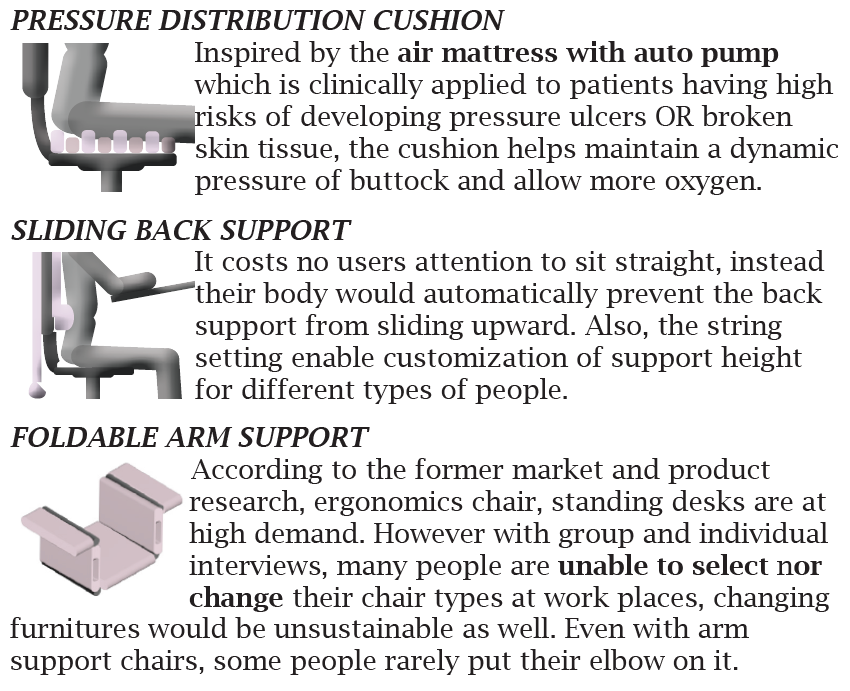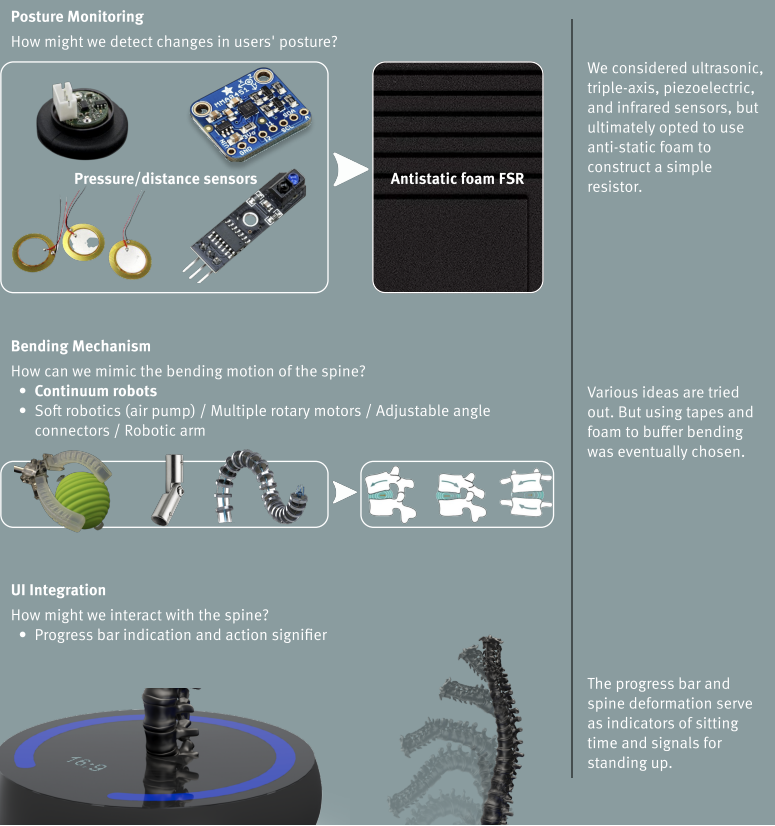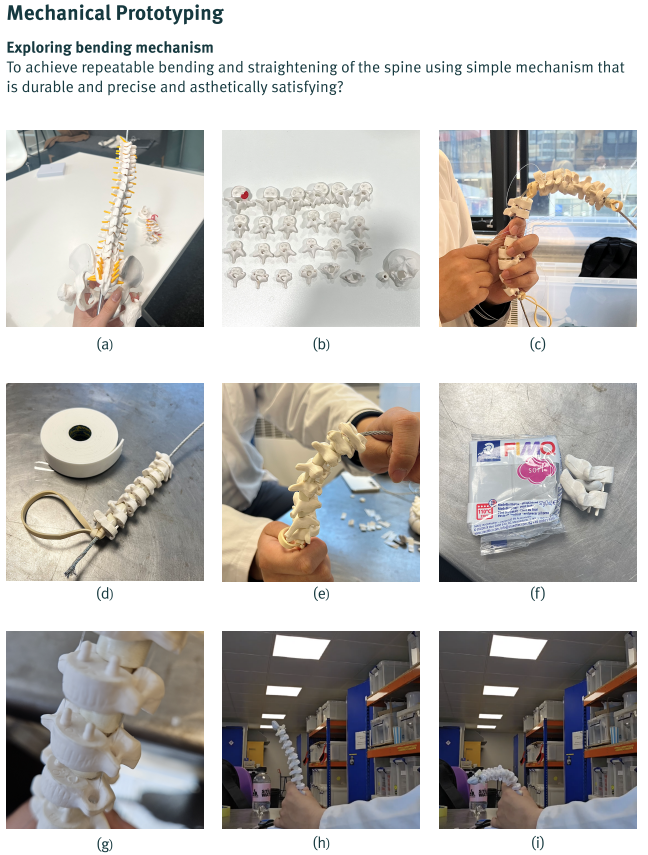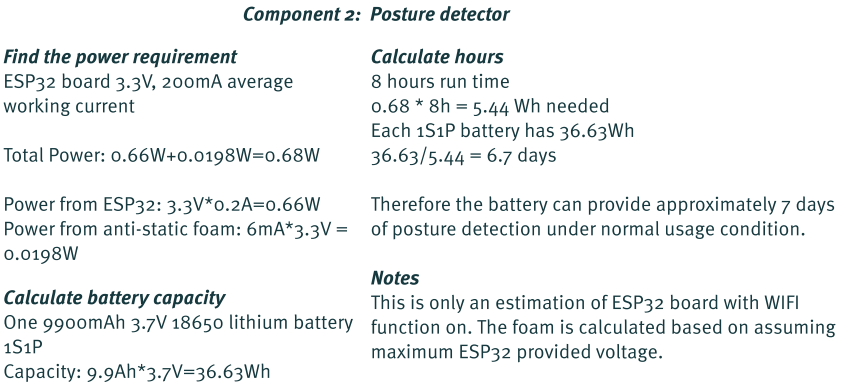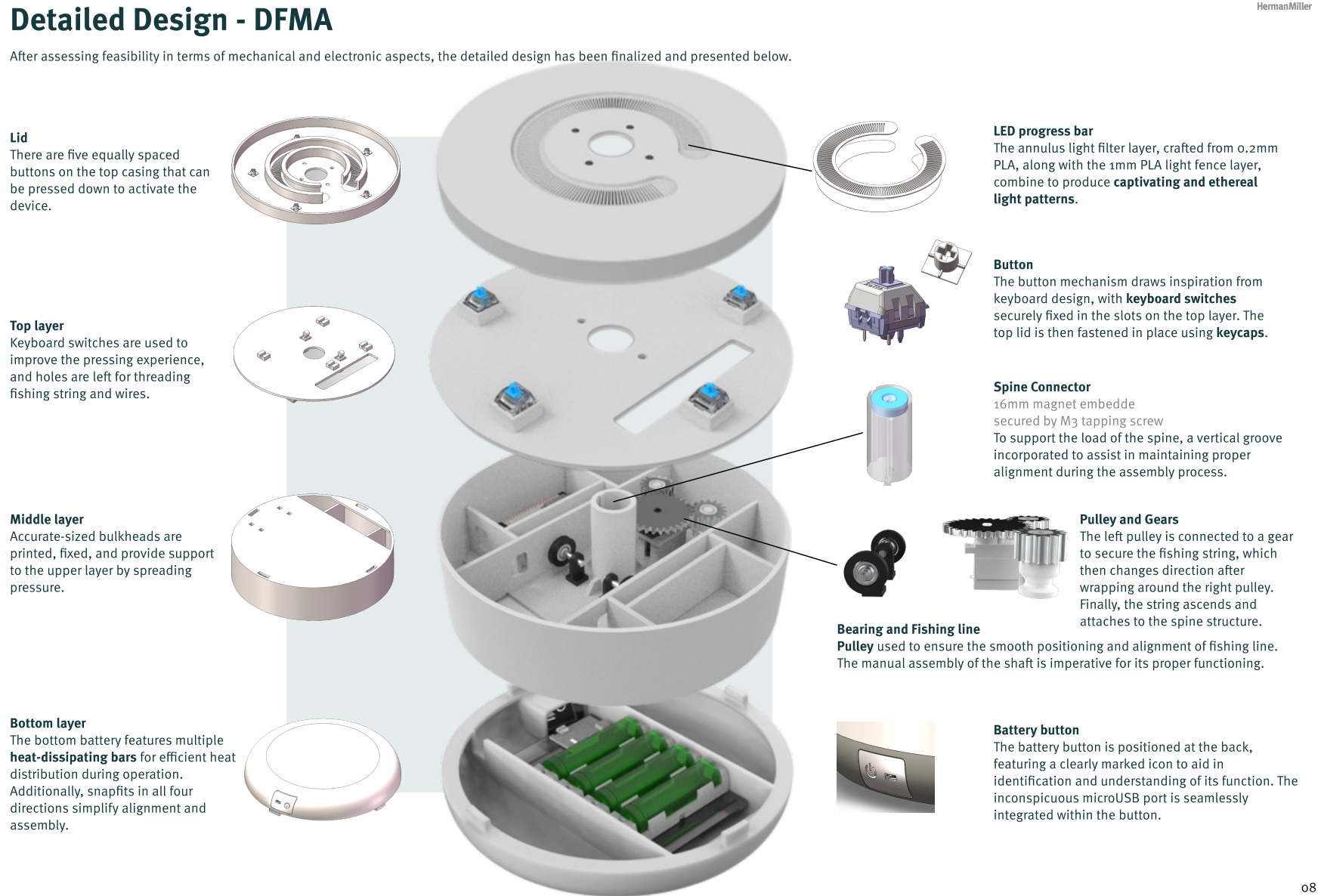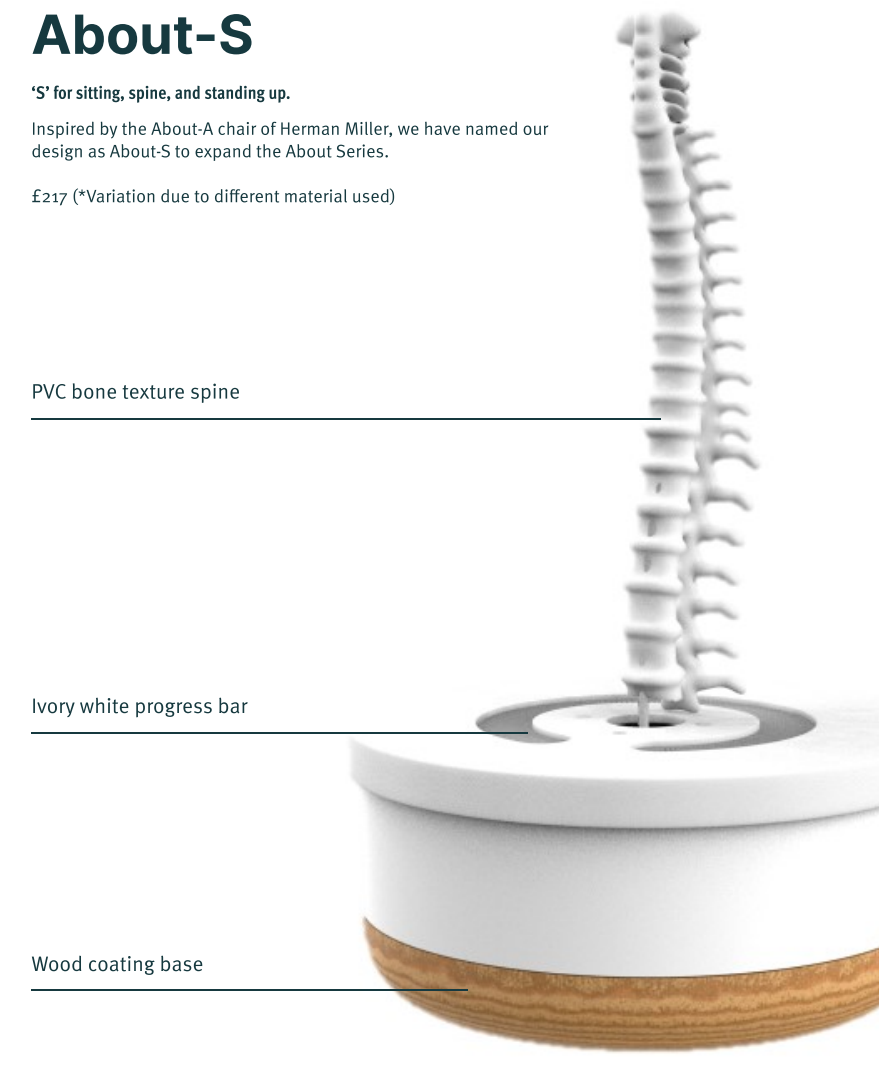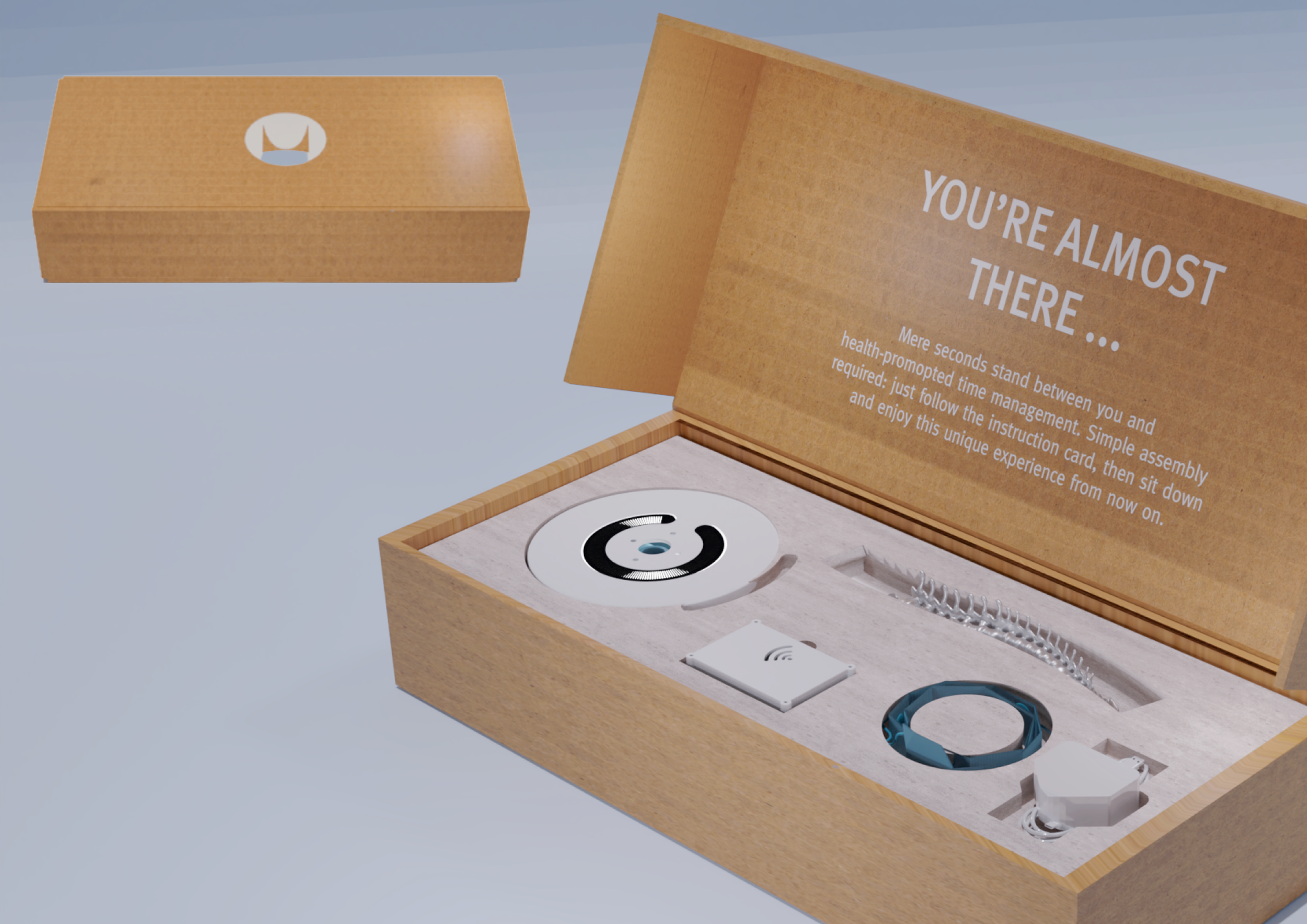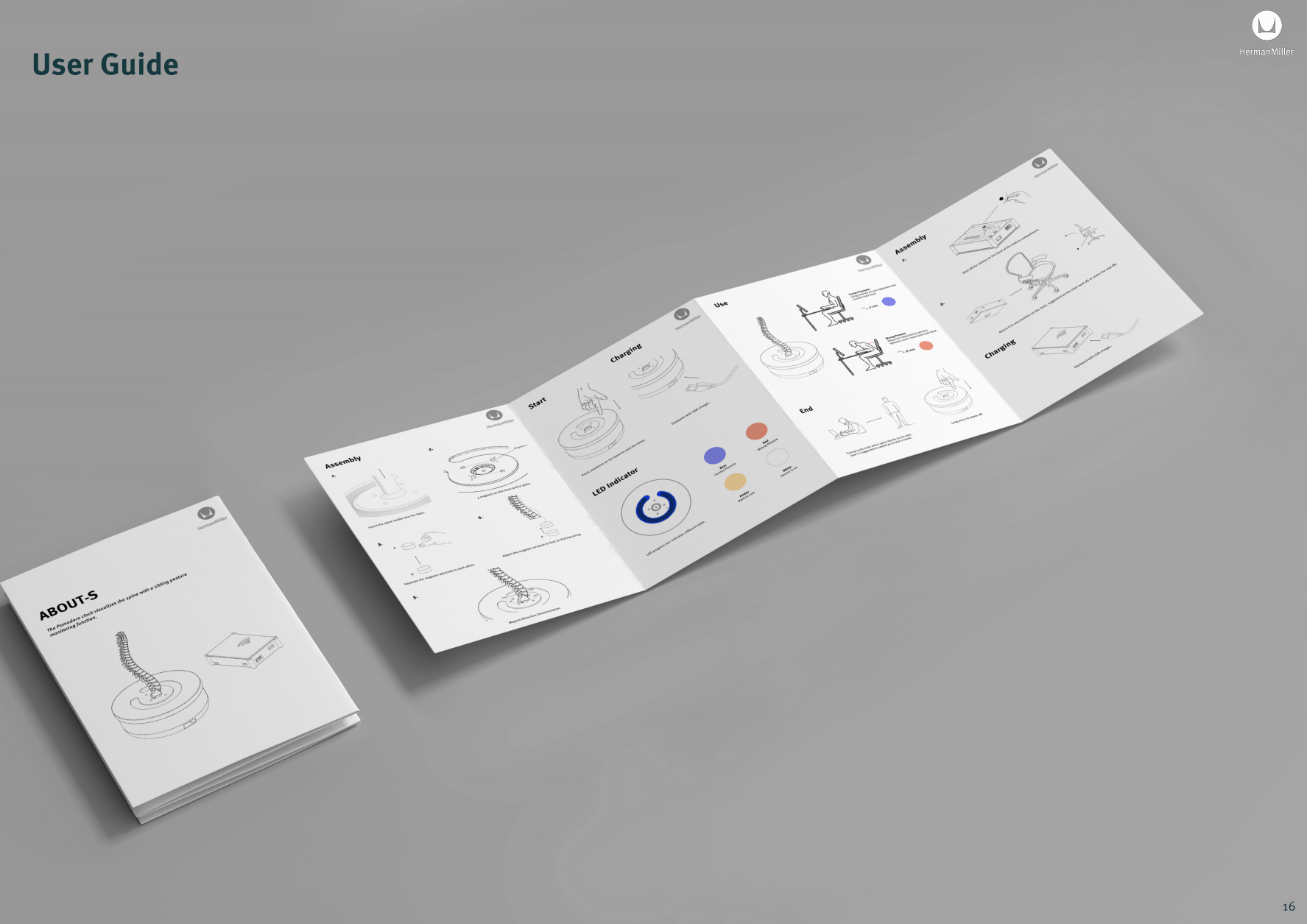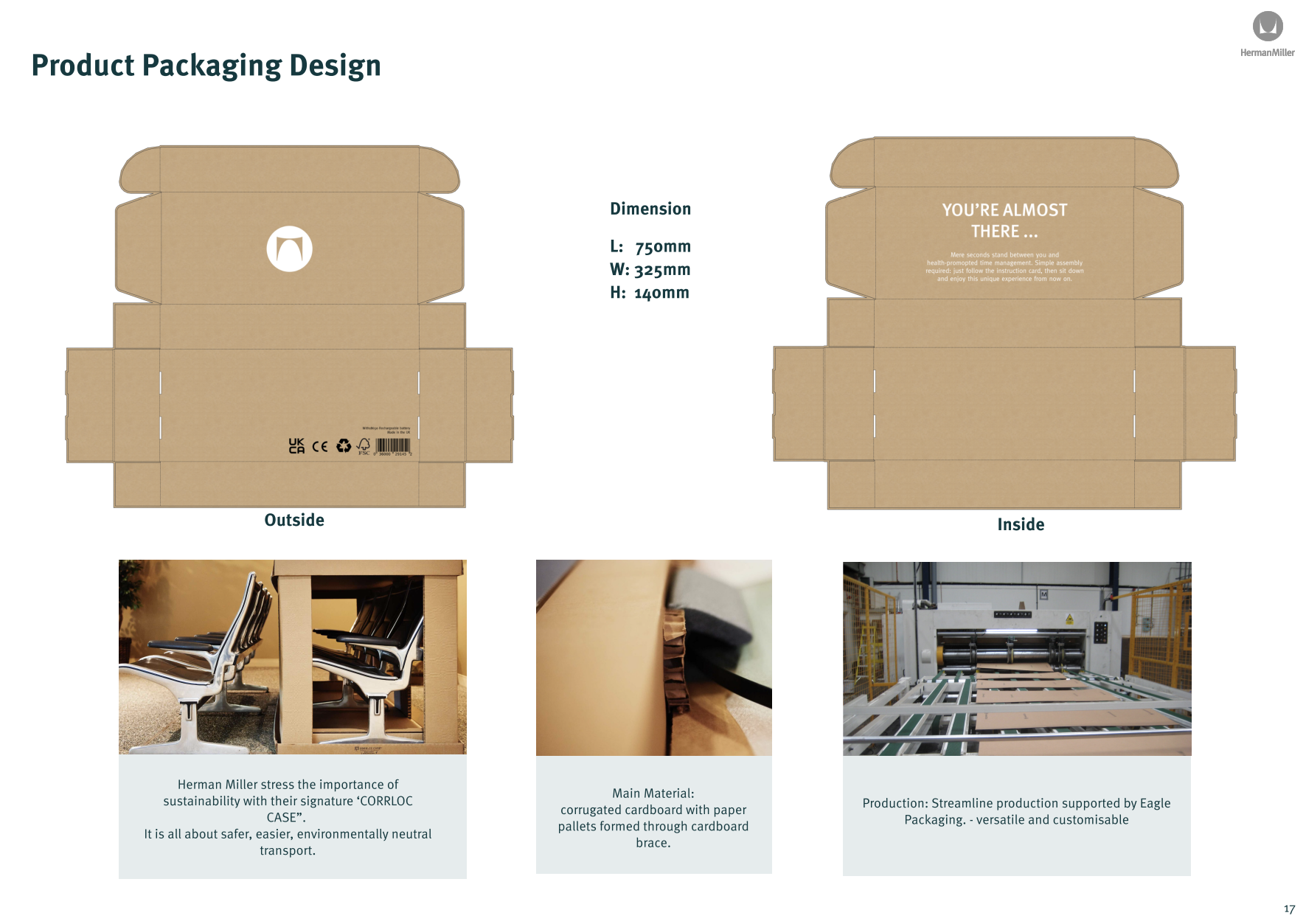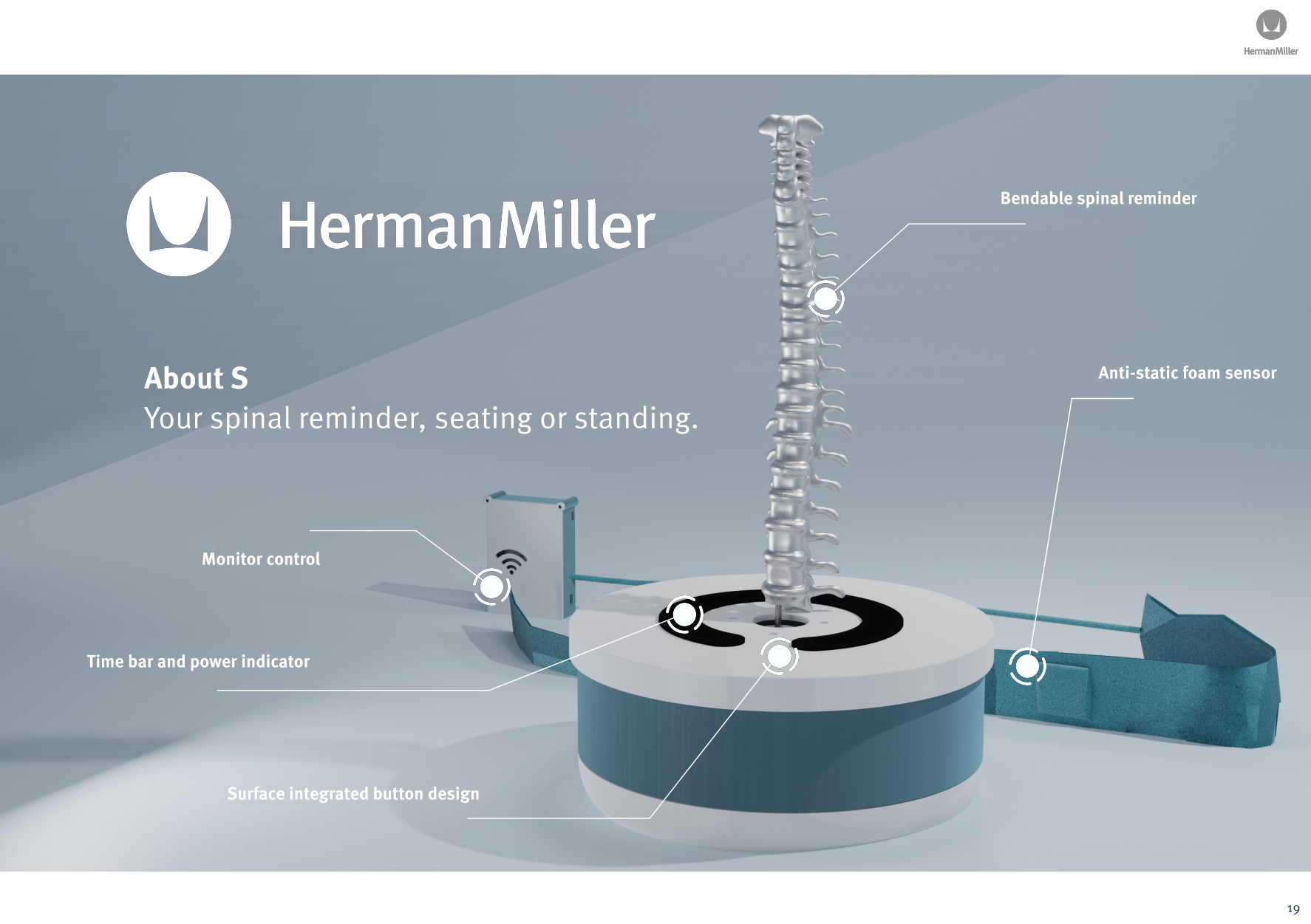Industrial Design Engineering - IDE
Industrial Design Engineering involves both group and individual coursework aimed at integrating knowledge of mechanics, SolidWorks, electronics and graphic design to complete a project. This year, the topic focuses on designing underserved minorities. As a group, we have identified people with a sedentary lifestyle as our target users.
"Research into the issues associated with prolonged sitting has shown that merely encouraging people to stand more frequently is ineffective in reducing health risks. To understand this better, I conducted user research and interviewed various professionals, such as doctors, drivers, receptionists, and consultants. It was found that for individuals in such roles, reminder strategies like the Pomodoro technique are often not feasible due to the nature of their work. These professionals sometimes cannot avoid remaining seated for over three hours continuously. Thus, it was determined that implementing measures to alleviate these issues is more effective than merely using reminder strategies.
Here are some initial brainstorming ideas that could potentially align with the project goal.
In another study, we found that good and healthy posture enables individuals to sit for extended periods. Additionally, a suitable armrest helps maintain proper posture and reduces pressure on the bones and waist. However, the effectiveness of this method depends on the armrest being height-adjustable.
A significant need exists for a comfortable, height-adjustable armrest to support health during long sitting periods. While many ergonomic chairs provide this functionality, there is a gap in the market for an affordable solution accessible to daily workers who are unwilling to pay high prices for ergonomic chairs, or are unconvinient to use ergonomic chairs at work places.
Consequently, I have proposed an affordable, foldable metallic armrest and am currently evaluating its technical feasibility. Below are some rendered images that detail this concept.

Final render
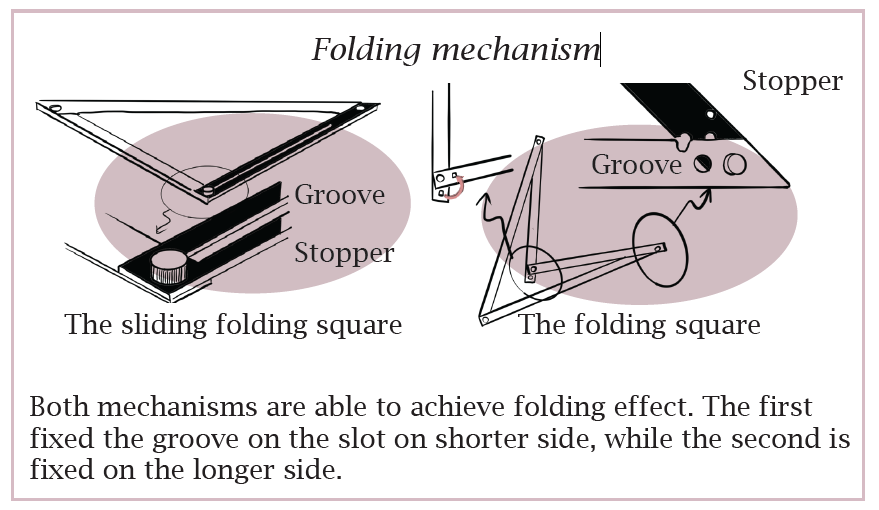
Initial sketch

Armrest position exploration

UI/UX exploration

Rendered final design structure
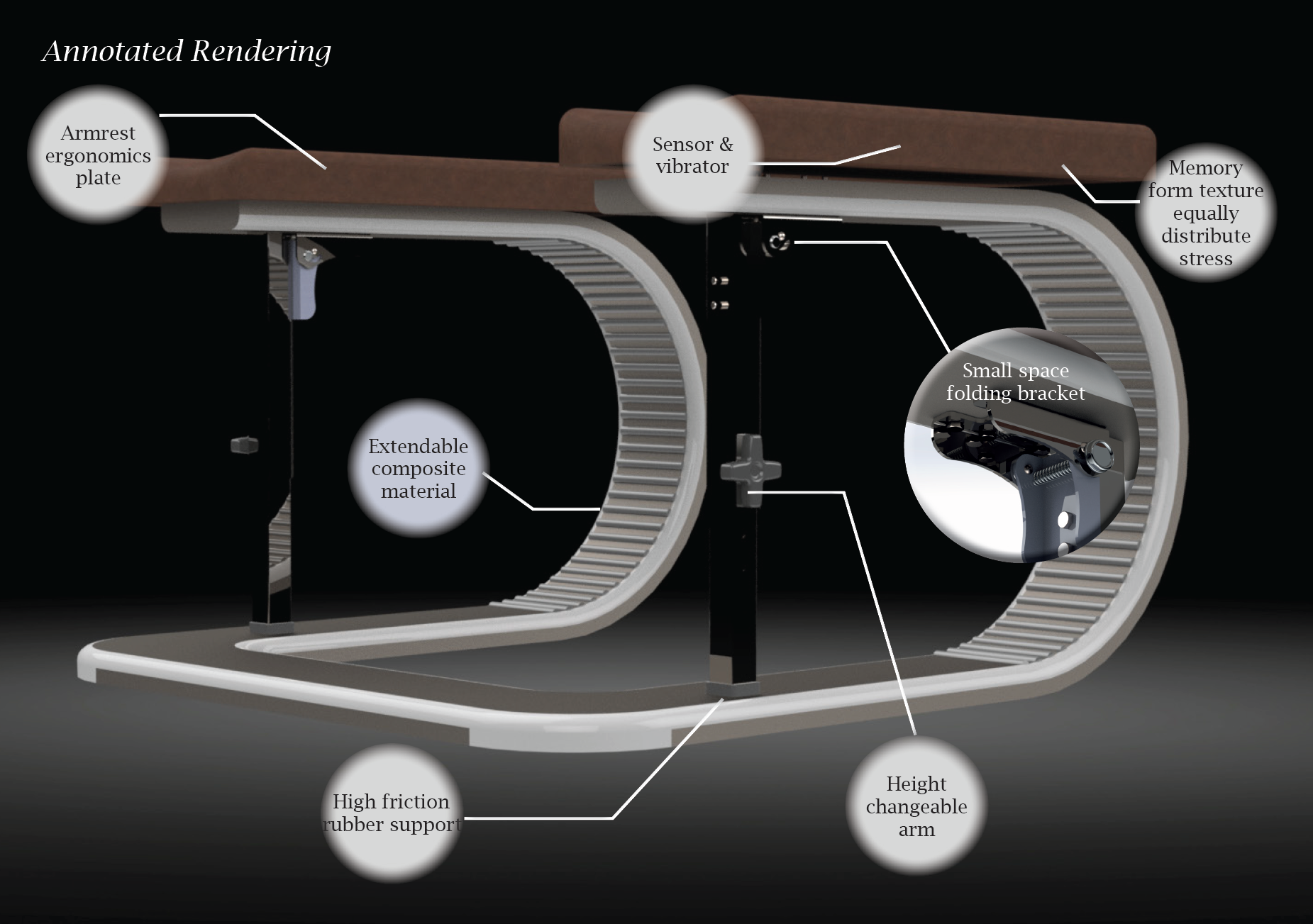
Final design features

Design features
*Herman Miller were not engaged in any consultancy or collaborative capacity with this project and the outcome is in no way endorsed by them. Any publicity is limited to personal and academic use.
"Sedentary" describes a common modern lifestyle characterized by limited physical activity and minimal exercise, posing health risks such as obesity and having adverse effects on the body. A study covering 47% of the global adult population shows that the average person spends 4.7 to 6.5 hours per day sitting, with this average increasing annually. Based on market research and user interviews, our team has decided to prioritize addressing the negative impacts of sedentary behaviour. Our focus is on prevention and creating incentives for individuals, particularly in office settings, to adopt a more active lifestyle.
Keywords summarizing our product's position, main features, as well as embedded value and essence were first identified. Referring to these keywords, our team selected several potential brands that may match our character. From there, we navigated to Herman Miller as the brand most likely to align with our design.
Our design fits seamlessly into the category of modern desk accessories, enhancing the functionality of Herman Miller's ergonomic chairs. It aligns with their focus on innovation, modernity, and promotes back health. The craftsmanship of the vertebras showcases the brand's commitment to producing high-quality items, reflecting its prestigious heritage.
The initial concept arose from a Pomodoro clock, which is used to remind users to stand at regular intervals. It features a time indicator and includes a visual representation of the impact of a sedentary lifestyle through a bending spine. From this, we explored how functions could be developed from ideas.
There were BOM tables and different trial and error sessions during this process. Mechanical prototyping tries to solve the bending mechanism, and electrical prototyping helps tackling posture monitoring.
As a CTO of the team, I calculated the battery duration, snap-fit angle and motor’s torque requirement to ensure the product works smoothly.
Calculations show 4S1P battery powering main model can wistand for 3 days, and 1S1P battery powering posture detector can withstand for 7 days. Both results are calculated based on normal operation. Assuming the coefficient friction of PLA 70% infill is 0.3824, the self-locking angle would be 7o degrees. And the gear ratio is supposed to be 2:1 to enable a 72N force applied to the spine.
After detailed calculation, we are able to create a 3D module. I built a model for the base using Solidworks, with all features customized based on user research done in stage 1.
We also integrated branding into our product, envisioning its placement within the workspaces of Herman Miller's target audience and adhering to the color scheme of their previous series.
We want to make sure small printed components inside the machine to be as solid as possible, and try to balance out the pressure. Using FEA analysis, we could find the weak point and strengthen it in next generation prototypes. Also, resonance could be another risk if products not designed properly when rotation of motor is the main driving force.
From all that analysis and researches, we finally have an ideal spinal reminder that evaluated with technical viability, user consideration, and compliance viability.
Gallaries below present the application of the spine model in working environments, packaging design details and engineering drawings of the product. A work-like model is also manufactured, demostrating mechanical feasibility of the product.
